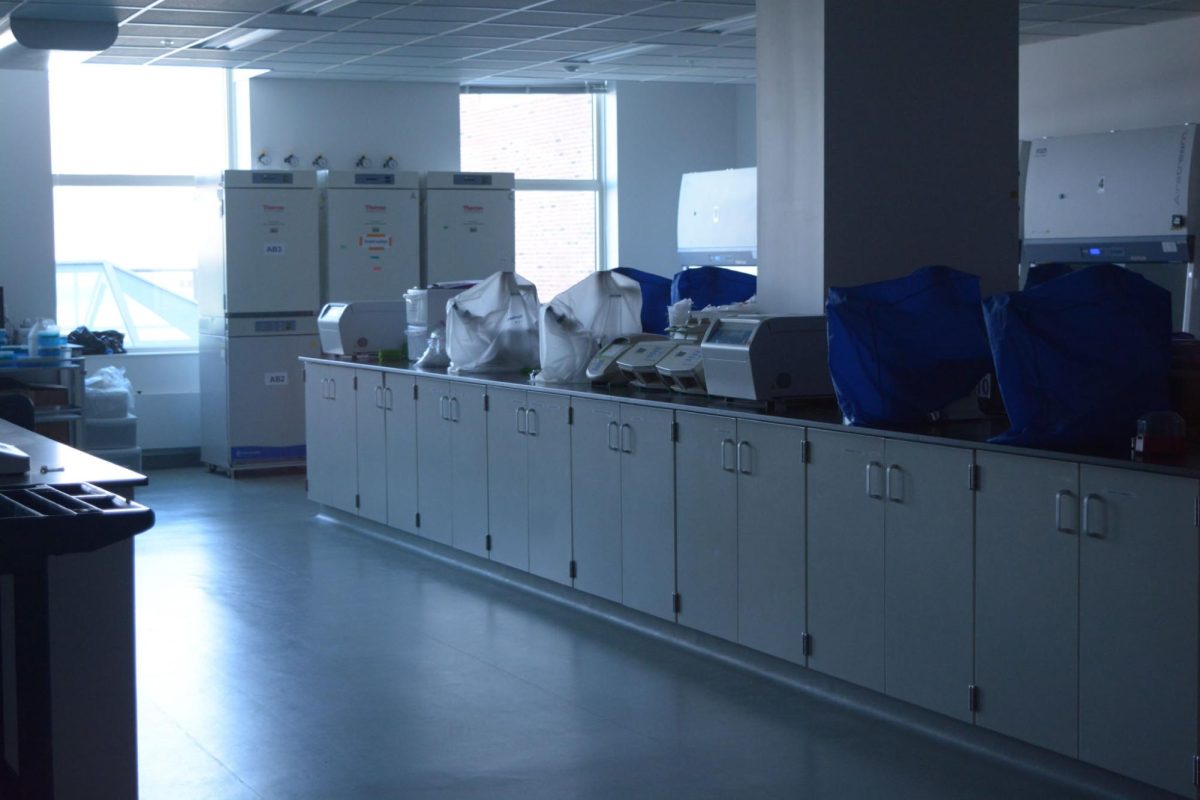The National Science Foundation partnered with the University and other colleges last April for an ongoing expedition that pushes the power of computers by computing with living neurons.
The project aims to develop a computing system centered around in vitro living neurons, meaning the neurons used are created in a lab. The idea is to use these cellular substrates as the processing core of a computer system.
“To build the computing system, there are several layers that need to be accounted for,” said Mattia Gazzola, the emergence lead and co-director of the project. “There’s a need to figure out what kind of computing models, what mathematics you need.”
Gazzola described the neural substrates as having the ability to generate dynamics that can continue to evolve, potentially creating a way to reproduce the abilities of creativity, learning and adaptivity in a computer system.
Taher Saif, biofabrication lead and co-director, described the process of testing what minimum cognitive abilities can be read from living neurons. According to Saif, cognitive awareness can be studied and applied by sending some type of stimulation to the living neurons and seeing if the computational system can remember the response and even reproduce it.
Get The Daily Illini in your inbox!
“Then comes the question of would they be able to make decisions,” Saif said. “Can they put together two types of signals to make sense out of it?”
According to Saif, by accessing the power of neurons in computation, these new computers will be able to do things that the most powerful computers today are unable to do and with less energy. The neurons will be able to make connections faster and better than any computational system existing today.
“People that today build algorithms … are not worried about what materials the computer is made of, how this is fabricated,” Gazzola said.
This technology is, in the words of Gazzola, “nonexistent.” Everything is being built from scratch. The computational system will be better than a traditional system, bringing new abilities and huge potential to the world of computing.
The Mind in Vitro expedition allows undergraduate students to collaborate with graduate students and primary investigators to further the research and computing being done. Students from biological, physical science and computational fields can apply to and work on the project, providing an opportunity for students to see different scientific fields in action.
“One of the coolest things that I saw is that professors from different departments, grads from different departments are all coming together and doing their part to make this thing work,” said Shalini Yagnik, senior in Engineering on the pre-med track. Yagnik has been doing research for the Mind in Vitro expedition since the beginning of last semester.
The research that students are doing offers an opportunity to learn things from their field of study outside of what is taught in class, as well as learning things from other disciplines that they might not have had the opportunity to learn.
“I learned a lot,” Yagnik said. “I didn’t really have that much information on reservoir computing at all and I knew about recurring neural networks, but I didn’t really have a strong definition of what it is and what they do.”
A big part of the Mind in Vitro research experience is collaboration. Undergraduate students are paired with a graduate student to collaborate on their findings and work. The diverse environment provides students with room for growth, learning and teamwork, Yagnik explained.
“Working alongside my graduate student, it just made everything really fun and I was able to learn a lot,” Yagnik added.
According to Nancy Amato, outreach and education lead and co-director of the project, the Mind in Vitro expedition not only aims to provide education and opportunities to students of different disciplines but to the public as well. Outreach programs for K-12 schools will be offered in addition to open symposiums, seminars, and museum installations.
“We are already seeing a lot of interest among the participants,” Saif said. “We might have maybe 78 seminars so far, and thousands or so attended them.”
The beginning stages of the Mind in Vitro expedition are rapidly advancing with the multidisciplinary collaboration that the project brings. According to Gazzola, students and researchers alike are excited to work on the project.
“I think there’s a really kind of special energy around this project,” Gazzola said. “This excitement is a very powerful asset to have.”







